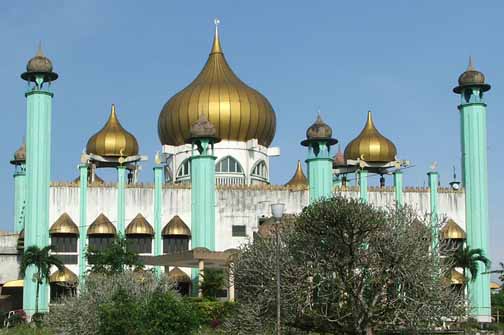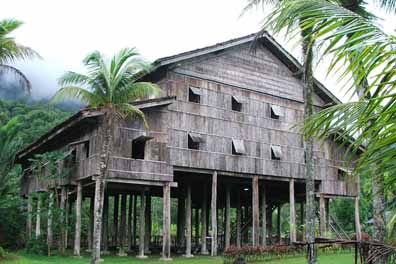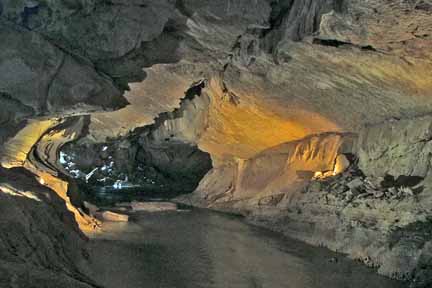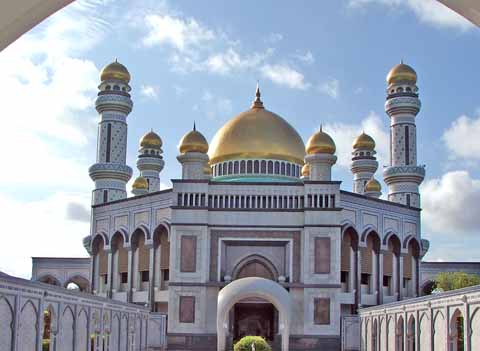
Back to Borneo (with Brunei Bonus)
This trip was planned on the fly. I decided to take advantage of cheap
fares to Singapore to get an early start on my mileage quota and go from there.
On the flight from Tokyo I get in the mood with
the (Singapore) Straits Times ("since 1845"). Some items:
• A
roving police unit is imposing $200 fines for smoking in public.
• A
17 year old was given nine months in a "boys home" followed by nine
months probation plus 80 hours community service for piggybacking on a
neighbor's wireless signal. His
parents thought he was spending too much time playing video games so they cut
off his internet service. He was
caught sitting on the curb in front of his neighbor's house with a laptop,
freeloading on their unprotected wifi. During his probation he is barred from using the internet. The article also notes that he was rude
to his tutor. For his crime, he
could have been sentenced to three years in prison.
• In
fashion news, a designer has introduced the "burkini," a combination
burkha and bikini for observant Muslim babes. It's a two-piece bathing suit that covers one from wrist to
ankle and incorporates a headscarf.
Along with the immigration form I am handed a
leaflet that Singapore now has a zero duty free allowance on tobacco products. The nanny state meets the no-smoking
nazis.
By now I've got this drill down pat: the flight
arrives after midnight, and if you don't check luggage and have a reservation
at the transit hotel, you can spend the rest of the night in the airport,
saving the taxi surcharge and ultra-late hotel check-in. In the morning the queues have
evaporated and public transit has resumed.
I take the bus across the causeway to Johor Bahru
in Malaysia, where I have booked a cheap domestic flight to Kuching. There, airport security is reasonable,
not the TSA theater of the absurd. Then again, this is a Muslim country, so there's no big risk of some
towelhead sneaking a tube of toothpaste aboard and crashing the plane into a mosque.
Thanks to the low-cost carrier Air Asia, the fare
to Borneo is a fraction of what I paid last time. I paid $50 for a 2-hour flight on Malaysian Airlines; if I
had wanted to fly at an odd hour I could have gone even cheaper.
It's humiliating to walk past business class into
steerage. I am grateful for the
white man's privilege which at least got me an exit seat. The in-flight magazine has an article
on Antarctica, with the notation "Malaysian Airlines flies to Stockholm
three times weekly. From there you
can arrange local transport to Antarctica." That's one long, wet dogsled ride.
The airport at Kuching is gleaming and new with
lots of helpful tourist information, including a city map that includes bus
lines and schedules. A $5 taxi ride brings me to my hotel. I am not sure about its claim of 4
stars, but it's a solid 3. It is
in the sweet spot: nice enough to appreciate but not so comfortable that I
don't want to go out. At $35 --
it's a bargain. It's taken me 2 1/2 days of travel to get here. Even Phineas Fogg would say that's a long
trip.
Kuching, capital of Sarawak state, is often
described as the most pleasant city in southeast Asia. I agree. With a population of half a million, it's compact but uncrowded.
This is a WHO Healthy City, which I take to mean that it's OK to drink the
water.

A brief history of Sarawak: In 1841 James Brooke, an English
gentleman and adventurer, engaged his schooner in the service of the Sultan of
Brunei against a native uprising, in return for which he was granted dominion
over a portion of the northwest coast of Borneo populated mostly by
headhunters, thus becoming the white Rajah of Sarawak. It's a real-life Man Who Would Be King,
the only English family to sit on an oriental throne. He was succeeded by his nephew and grandson, who expanded
the territory at the expense of their ostensible patron. The real-life Wendy, after whom J. M.
Barrie modeled the character in Peter Pan, married the grandson and became the
last white Ranee of Sarawak The party ended in 1941 when the centennial celebrations were cut short
by Japanese occupation.
All over the place are signs celebrating 50 years
of nationhood. Not quite. In 1957 Malaya, the peninsula on the Asian mainland south of
Thailand, became independent. In 1963 it formed the Malaysian
Federation with the former British North Borneo (now Sabah), Sarawak and
Singapore. Brunei was supposed to
join but backed out. Singapore was
expelled in 1965 (and has had the last laugh).
Thursday afternoon is nothing more than a brief
walkabout. On Friday, I start the
day with the excellent Borneo Post, which contains all the news you need from
Hollywood gossip and American Idol ratings to local and world events. A city court has sentenced a man to 9
months in prison for shoplifting a bottle shampoo. Yesterday morning, prior to my arrival, throngs gathered at
the airport to greet the pilgrims returning from Mecca. In India barehanded bullfighting
injuries are way down since they started administering breathalyzer tests to
both contestants and the bulls. And the foreign affairs ministry has issued a booklet with tips for
diplomats' wives. These include
"don't gossip" and "keep your bathrooms sparkling
clean." Asked whether a
similar publication would be prepared for male spouses, an official responded,
basically, "why?"
Malay uses the Roman alphabet. Fortunately, they didn't knock
themselves out inventing new words. You can go to the tiket kounter right past the lif lobi and take a
teksi, ekpses bas, or a tren to the klinik or maybe the tekstil muzium, stopping
at a restoran for a tradisional snek or a kofi with krim, unless you are
stopped by the polis.
Kuching is Malay for "cat." An apocryphal story has Mr. Brooke
asking the name of the town and the natives thought he was inquiring about a
passing feline. Cats appear on the
city seal and everything else, inclusing the manhole covers. Giant cat statues are at several
intersections. What better place for a Cat Museum, which houses what has to be
the world's most comprehensive collection of ceramic cats, cat paraphernalia,
and feline-themed displays. There
are stuffed specimens of native species such as the leopard cat, the marble
cat, the clouded leopard cat, various civets, and the only mounted example of
the rarest cat of all, the bay cat. (It looks like a giant weasel.)

There are exhibits on the Japanese "beckoning
cat" (one-arm waving), famous cat owners in history, from A. Lincoln to A.
Schweitzer to A. Einstein to A. Frank, (A. Hitler was a dog owner), and cats in
movies, e.g., The Cat Burglar,
Cat People, Cat Ballou (I know, there's no cat), the Aristocats, etc. IMHO, the Hello Kitty exhibit is inadequate.
In one corner there are photos of the white Rajahs
and company in their finest colonial plumage and appearing to be having the grandest of time, like
the ultimate Shriners. picnic. In
contrast, their native successors are trying to look serious and dignified but
mostly end up looking silly.


Unlike most places, the colonial architecture of
Kuching has been well preserved. Many buildings have a European
castle theme. The Sarawak Museum
was modeled it after a hotel de ville in Normandy (it was designed by the
Rajah's French aide). Its many
stuffed and pickled specimens look like they date from the museum's opening in
1891. The big draw for natives was a pair of elephant skulls, who considered
them the ultimate headhunting trophies. Nowadays, it is noted for its ? yawn ? ethnographic collections.
Across the street is the Islamic Museum, which has
nothing to do with the history or accomplishments of Muslims in Sarawak or even
of their current day headhunting co-religionists elsewhere, who practice their
savagery while chanting the Koran. Instead it's a general self-esteem enhancement museum, focusing on any
achievement by any Muslim at anytime anywhere. Thus, there is Persian art and Ottoman armor, mathematicians
and scientists who lived 1000 years ago, and photographs of mosques around the
world. The dry subject matter and
the absence of air conditioning make for a short visit.

What I really want to see is a rafflesia, the
world's largest flower, which measures about a yard across and smells like
rotting flesh (to attract flies for pollination). The bloom is very rare and only lasts a few days. Two years ago one in Kew Gardens,
London bloomed, drawing viewers from all over Europe and beyond. During my last visit to Borneo (Sabah)
there were none in bloom. This
time my luck is no better: one bloom finished the day before I arrived and
several buds are predicted to bloom late in the week after I will have moved
on.
As a poor substitute I book a day trip to Bako
National Park. The park is on a
peninsula separated from the mainland by mountains, so access is by water Sculpted sandstone cliff frame the
beach dramatically, where we land MacArthur style.
Our guide leads us on long climb to a bare hilltop
where there is an impressive collection of carnivorous pitcher plants. Back at the shoreline, a path through
mangroves is supposed to yield an up close look at the resident proboscis
monkeys, but they prove as elusive as their northern relatives on my trip down
Sabah's River Unpronounceable. At
least this time I don't have to suffer through camping in the mud in the
attempt.
Our one wildlife success is the bearded pig, rare except for the denizens resident around the park headquarters. When not cadging handouts from visitors they are roto-tilling the lawns looking for worms.
 |  |
Sarawak and Borneo are famed for their longhouses,
contiguous huts which house an entire village. It's pretty amazing ? if you've never seen an apartment
building. What amazes me is how
western tourists travel for hours upriver just to visit and sleep in one. It's supposed to be a cross-cultural
experience, but I consider it a total fraud. At the longhouses they don traditional costumes, dance, and
pretend to be primitive. In
reality, that's their livelihood: hosting tourists. And you have to pay big
bucks for this ordeal.
At
the Sarawak Museum I met a guide who offers take me to a longhouse on the
Kalimantan (Indonesia) border. It's the biggest one he knows of, 73 families. Two or three times a month he will take one or two tourists
out there; no one else visits. To
ensure a friendly reception, we bring candy for the kids.
The longhouse is constructed from a combination of modern and traditional materials. There is an outer veranda, a common inner veranda, and individual family compartments. About 400 people live here. They are farmers, raising most of their own food plus cash crops of pepper and cocoa. Electricity arrived a few years ago, and there are several TVs and video players. The headman is easy to spot ? he is the one wearing a wristwatch. The men are out working in the fields, so only the women along with their amazingly well behaved kids are around. They are proud of their modern conveniences and, of course, dress in regular clothes. They are a mixture of Christian and Baha'i, having been converted by respective missionaries. The headman is pleased that I am able to identify his poster of the Baha'i shrine in Haifa, where, five years ago, missionaries took him to visit.


The next day I visit
the Disney version, Sarawak Cultural Village. Its pitch is "Sarawak in half a day." Set around a pond, er um, "lagoon," are five types of longhouses (plus Malay
and Chinese houses) where actors in
costumes show you their native customs and invite visitors to join in or enjoy such traditional pastimes as "Borneo bamboo
golf," "coconut bowling," and blow-pipe shooting. Although totally fake, it's more honest than the
"real" longhouses tourists visit. (Deep in the jungle there are plenty of untouristed
primitive longhouses, but they are so remote that you can't get there from
here.) At the entrance booth, you
are issued a "passport" which is stamped at each pavilion. I gamely comply lest they not let me
out without all 7 stamps. Although
every foreign tourist to Kuching comes here, a combination of a dead low season
and it's pouring rain today means that I pretty much have the place to
myself.

Then there's the native dance show, about what you
would expect in a venue where they perform 2 times a day, 365 days a year in a
place where jobs are plentiful (unlike Africa). Call me a skeptic, but I don't think they traditionally
comforted the bereaved at funerals through Janet Jackson choreography with
backup dancers, all in perfect sync and in day-glo costumes. And there are no more
"tribes"; that word has been supplanted with the ubiquitous but meaningless
"community." I can
envision, back in the day, a war canoe from one community, full of goodwill ambassadors
paddling to take as trophies the heads of members of neighboring
communities

My overall review of Sarawak Cultural Village: I
wasn't expecting much, so I am not disappointed.
One of the best things about Kuching is the
food. The Chinese come for the
birds nest and shark fin soup. My choice is the Topspot Food Court, a giant fish market cum
restaurant scenically perched atop a six story parking garage. You select your fresh
catch from multiple vendors and they cook it up on the spot as you like
it. And the prices are right:
snapper $1.00 per 100 grams; giant prawns, $1.50 for 100 grams. The stalls are all owned by Chinese but
the serving girls are Malay. The
latter are much better built, as revealed by their skin-tight clothing. It's like hot Asian babes in
headscarves.
I stay in Kuching for five days, much longer than
anticipated, and reluctantly move on. The days are gone of slowly chugging up the Sarawak River. Now there are express boats with
airplane-like enclosed cabins. At
the wharf side ticket office, the guy asks me "economy or first
class?" The former cost $11, the latter $1.50 more. Not a hard choice.

To my surprise, playing on the video monitors are
what are called here lewd videos. Must be for the crew, because once we get under way they put on a
schlock horror flick. The 4 1/2
hours to Sibu pass quickly. When I
arrive I pick the flashiest of the several hotels facing the boat terminal,
rejecting the $8 room for the much nicer $11 one.
Sibu is a Chinese town settled by immigrants from
Foochow. It got rich from timber
exports but then declined. Fancying a comeback its symbol is a swan. It's not
officially a city, but the largest town in Sarawak.
The postcard attraction of Sibu is its Chinese temple. As I entered I am waylaid by a little bald guy who starts a 45 minute lecture on yin-yang, Taoism, I-ching, numerology, symbolism, the Chinese alphabet, tai chi, fishing, Darwinism, black monkeys from Africa, white monkeys from Europe, 1000 year old predictions, and how they are all interrelated. When he is done (actually, he isn't, but it's 15 minutes past closing time) my head is spinning. He is the caretaker of the temple and is listed sin all the guidebook as an attraction in himself. I dine al fresco at the night market while admiring the posters of that famous Borneo diva Shakira.
 |  |
That afternoon my guide brings me to the first two
"show caves." The first,
Lang's Cave, is good but not unique. Right next to it is the Deer Cave, the largest cave passage in the
world, with a ceiling ranging from 400-700 ft. high. Very impressive, but too
dark to get a decent photo. There are 2-3 million bats which live
in the cave.. After visiting the cave we wait outside until dusk when they
emerge in long, sinuous ribbons of flight.

At the Royal Mulu Resort the rooms are enormous,
tastefully decorated, and very comfortable. It's also about 95% vacant. I like
it here.
What would a tropical resort be without a cultural
dance show during dinner? I think
the girls are cuter than at the last one. They don't try to force me on stage to dance, but I do succumb to a
lovely maiden who beckons me to try the blowgun. On my second puff I pop the balloon. To my disappointment,
my phone does not ring the entire time here.


In the morning we take a longboat to Young Lady
Cave, so-called because one of the stalagmites casts a shadow that sort of
looks like the Virgin Mary. Methinks the guy who named this is a cousing of the guy who found the
face of Jesus in a taco.

Then, the nearby Clearwater Cave, which has a large underground river. The cave system is over 100 miles long and is, by volume, the largest in the world. There are 70 or so caves in total, but the others are considered adventure caving requiring various levels of expertise. There is also a 3 day camping trip with a difficult climb 4,000 ft. almost straight up to a viewpoint over sharp limestone pinnacles, but that's too much suffering for me.

A toe injury causes me to skip the afternoon
canopy walk. That's OK ? all you
see up there is leaves and bugs. Instead, I watch a choreographer drilling the hotel help in uniform in a
dance routine, while catching up yesterday's newspaper.
• Back
at Kuching it has been raining since Monday night, causing flooding in the city
and surrounding areas.
• An
armed robber was sentenced to 6 years plus a whipping.
• In
South Korea condom sales are down. We are coming into the Year of the Pig, and couples want "golden
pig" babies.
• In
Shanghai taxis are to be fitted with cuspidors so drivers will stop spitting
out the window.
• Since
only nutters (like me) come to Sarawak during the rainy season, they will try
marketing to Arabs who might like the experience of free water falling from the
sky.
I spend two nights at the Royal Mulu, then fly
back to Miri. Next goal: Brunei,
a strict Muslim statelet ruled by an oriental potentate. It's less than 100 miles from its capital, Badar Seri Begawan, to Miri, but getting there is not so easy without a car. An expressway runs between the two (Miri is the weekend playground for a
dry and ascetic Brunei), but there is no
direct bus. Instead, I take a bus to the border, which connect to
another bus which brings me to Kuala Belait. From there, another local bus to Seria, which is as far as I
get today because the last bus to BSB leaves Seria
at 4 PM.
Seria is an oil town, the center of Brunei's
wealth. "Nodding
donkeys" are scattered about town, but the big fields are offshore. The stores are full of men in Shell
jumpsuits. I leave first thing in
the morning, not taking the time to visit the Billionth Barrel Monument or the
Oil and Gas Discovery Center. It's
2 hours on local roads for the final stretch to BSB, passing various oil facilities
and giant gas flares.
Around 500 years ago the Sultan of
Brunei held sway over all of Borneo, much of the Philippines, and beyond. This dominion could not withstand
European naval firepower, and by the late 1800's Brunei had shrunk to less than
1% of Borneo. (The Dutch and British
had the rest.) It is the smallest
non-island country outside of Europe. The discovery of oil in 1929 prevented it from evaporating into
insignificance.
The oil wealth of the country is the personal
possession of the Sultan, whose palace is the largest in the world. It's not open to visitors, but the
Royal Regalia Museum gives a glimpse of the Sultan's style.
The first thing you see if the royal chariot from
the 1968 coronation along with the accompanying regalia. Whoever designed them was obviously
inspired by Cleopatra's cinematic entry into Rome five years prior. By the silver jubilee in 1993, the
Sultan was much richer and the pageant more grandiose, with a bigger chariot
pulled by hundreds of uniformed bearers, all of which is preserved and on
display. Unfortunately, no photos
are allowed, lest we laugh at his vainglory. (No postcards available, either.) I suppose that's how most
tribal chiefs would behave if they had the means.
There is a scale model of the main reception hall
at the palace. Photos of HRH with
world leaders, none of whom I recognize. Gifts from subjects and supplicants include a gold pen from Standard
Chartered Bank, a sword from Honk Kong Banking Corporation that looks like it
came from a Kowloon souvenir shop, and an embarrassingly modest something or
other from Shell. Awards and
honors from foreign governments, mostly Arab and Islamic thugocracies but quite
a few from western Europe. Another
set of rooms contain the paraphernalia from the coronation ceremony. Lots of gold.
 |  |
Much of the population of BSB lives just offshore in stilt villages, forming the largest water village in southeast Asia. At waters edge is the "daddy" mosque, built by the current Sultan's father. Very impressive.


The Brunei Museum contains an entirely boring oil
and gas gallery and the Sultan's personal collection of Islamic art, which is
very good. Nice examples of
calligraphy (pride of place goes to a page from the Koran in the hand of HRH),
Turkish, Persian, and even French objects d'art. Interestingly, the descriptions are only in English.
Brunei is a one-day place, which is just fine because I need to be back in Singapore tomorrow night. I am much too cheap to pay the steep fare for a
direct flight. Instead, I take the 7 AM bus back to Seria, then to Miri, fly to Johor
Bahru, and end up in Singapore that night for the first of three flights to get
back to Jacksonville.